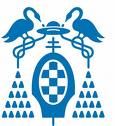News
Participating institutions

|
Department of electronics. UAHUniversity of Alcalá - Escuela Politécnica Superior Campus Universitario Ctra. de Madrid-Barcelona, Km. 33,600 28871 Alcalá de Henares (Madrid) |
Funding
Ministry of Education
This work is funded by the ministry of education.
The reference number asociated with this project is TRA2008...
Summary
Recent data has identified inattention (including distraction and falling asleep at the wheel) as the primary cause of traffic accidents, accounting for at least 25% of the crashes. Then, a growing number of In-vehicle Information Systems (IVIS) and of Advanced Driver Assistance Systems (ADAS) increases the potential driver distraction and his driving behaviours. Distractions detection is a sector that has not been as widely investigated as sleepiness detection. However, deep studies are needed in this sector due to the great relevance that it will reach in the next years. Being conscious of this problem, a system for cognitive and visual distractions detection is proposed in this project for a double goal: 1) to design a system for warning the driver when he is not paying adequate attention to the road, in order to prevent accidents, 2) to analyze the driver behaviour facing the new IVIS and ADAS, in order to integrate them in a safety way.
Our proposal is based on no invasive computer vision techniques using multiple cameras. The system will be formed by an in-cabin vision sub-system, for driver monitoring, and an out-cabin vision sub-system, focused towards the road, for dynamic vehicle monitoring. Distractions detection will be calculated by the fusion of these two complementary information visual clues.
Nowadays, most advanced systems are based on vehicle dynamics. However, these systems are very dependant on driver and road conditions and they cannot detect the so called micro-sleeps. We aim to overcome weakness of the current systems by adding driver visual information obtained from real-time computer vision techniques. We will study the relation between distraction and measured parameters. The system will be exhaustively tested both in simulated and real driving. Additionally, we plan to study a new safety technique, which takes the vehicle control and avoids its lane departure, in case of distractions. Then, we will study a cooperative communication system based on Vehicle to Vehicle (V2V) that ca be able to transmit the driver distraction level and other interested vehicles parameters to the surrounding vehicles.




